Yay! The flamingos have arrived.
And as usual, a stunning surprise at the end of the post.
Gathered in the middle of the large lake, I could only get the flamingos from a distance.
We do not know the exact day that they arrived, but the last time that we visited the lake 2 weeks ago, they were not there yet. They migrate to South Africa to breed at the start of summer, and they come down from the northern parts of the African continent.
Check out the happy dancing pair at the end of the line.
Did you know that there are 6 different species of flamingos?
Species
Six extant flamingo species are recognized by most sources, and were formerly placed in one genus (have common characteristics) – Phoenicopterus. As a result of a 2014 publication, the family was reclassified into two genera. In 2020, the family had three recognized genera, according to HBW.
Soon our lake will be filled with both the Greater and the Lesser flamingo species, but at Kamfers Dam there are many more.
Have a look at the source link below.
Kamfers dam
The dam harbours high concentrations of blue-green algae (Spirulina spp) and diatoms (Cyclotella spp.), the main food sources for its plentiful lesser flamingos. The dam typically supports 20,000 lesser flamingos, but occasionally over 50,000 individuals are present, a large proportion of the subregion's total population. The birds are mobile and commute between the major feeding sites in southern Africa.
And then we had a nice surprise.
What was that taking off from the lake area.?
They are South Africa's national birds, the Blue Cranes.
The reason for our happiness to see so many, is that they are on the Red Endangered list. Normally we have only seen couples and at one time 3 at most. Now look at this bonus in numbers.
Decline
While it remains common in parts of its historic range, and approx. 26 000 individuals remain, it began a sudden population decline from around 1980 and is now classified as vulnerable.
In the last two decades, the blue crane has largely disappeared from the Eastern Cape, Lesotho, and Eswatini. The population in the northern Free State, Limpopo, Gauteng, Mpumalanga and North West Province has declined by up to 90%. The majority of the remaining population is in eastern and southern South Africa, with a small and separate population in the Etosha Pan of northern Namibia. Occasionally, isolated breeding pairs are found in five neighbouring countries.
It is always great fun to come out here to the lake, and sun protection is a must, as the sun can fry one here.
Let me tell you that we were almost crying when we saw the 7 blue cranes in flight. They are safe here at the lake as the security is tight and no one can come and interfere with their habitat. Maybe, just maybe greater colonies of blue cranes can be established in this protected area, and we are going to make a noise about it. If we don't care, then who will?
Thankfully the flamingos are also safe here, as no swimming or watersports are allowed in the lake. Hikers are allowed and as @fermentedphil can tell you, it's quite a hike around that lake. We have done it once, but with my bad left knee it was torture, and my critical low iron level was also not of great assistance to me on the hike.
So, nowadays we only walk a few hundred yards until I find an open space in the reeds for my zoom to do the walking:)
Such is life.
I hope that you enjoyed the story and the pictures.
Photos by Zac Smith-All Rights Reserved.
Camera: Canon Powershot-All Right Reserved.
Thank you for supporting this post.
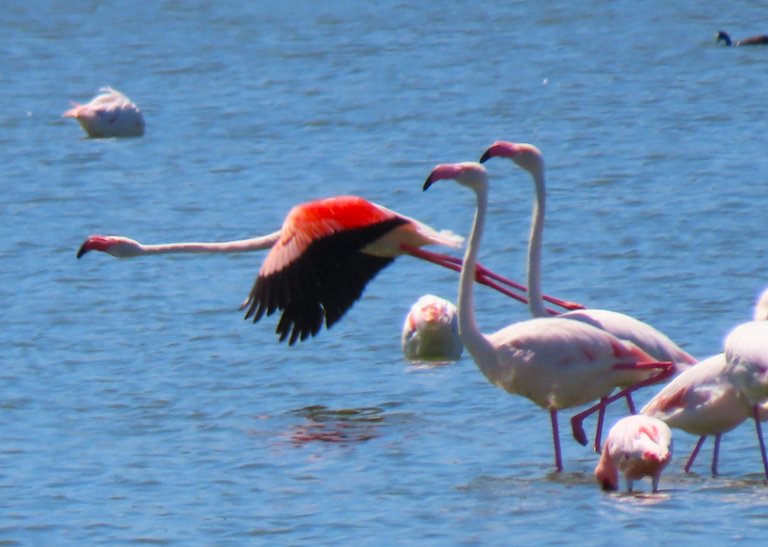
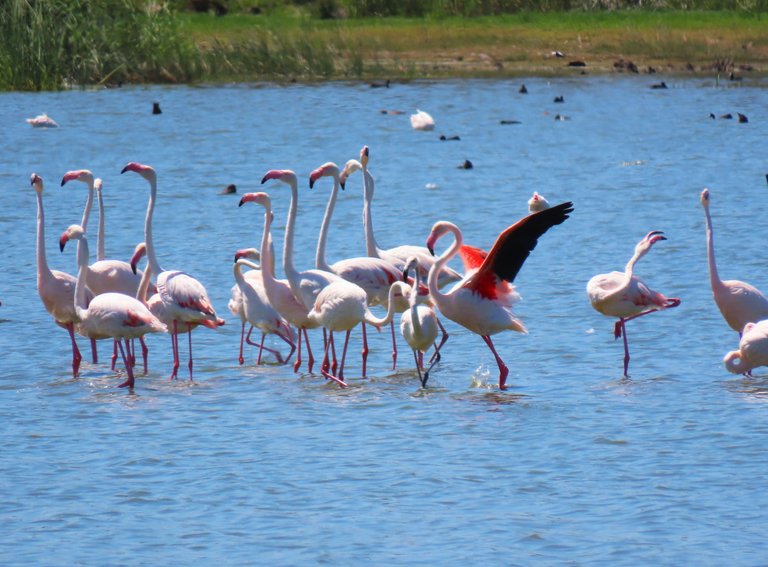
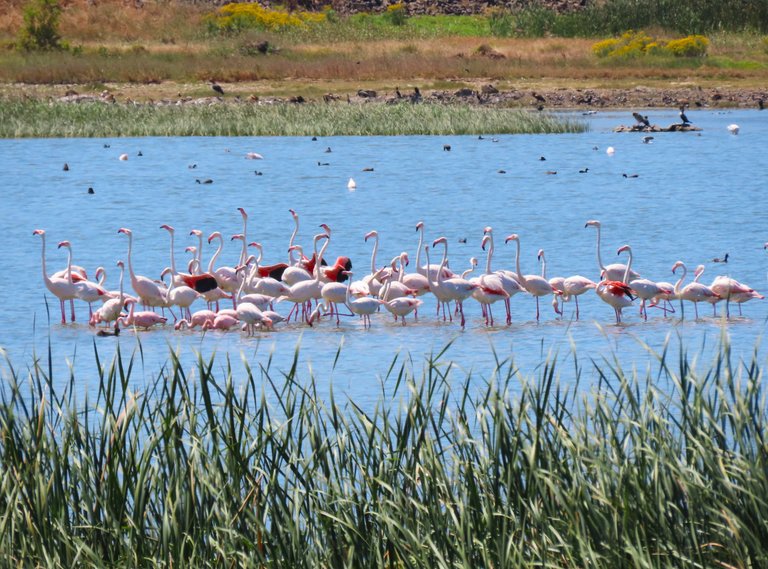
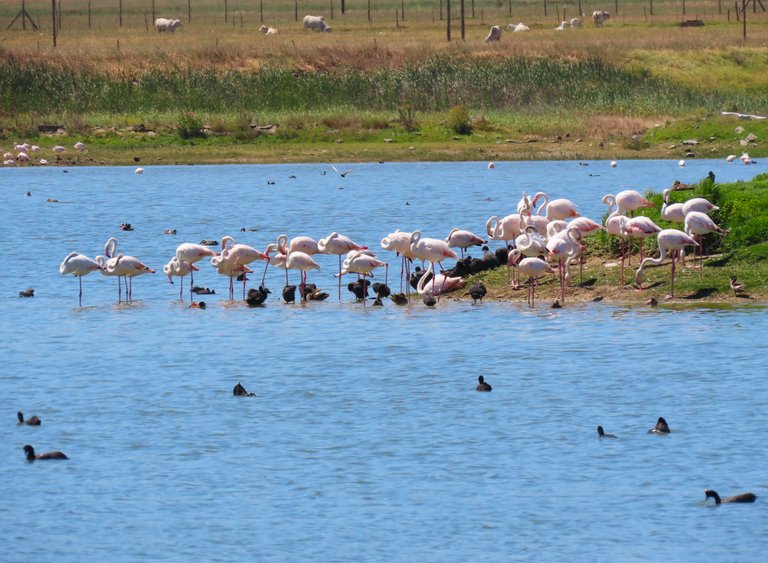
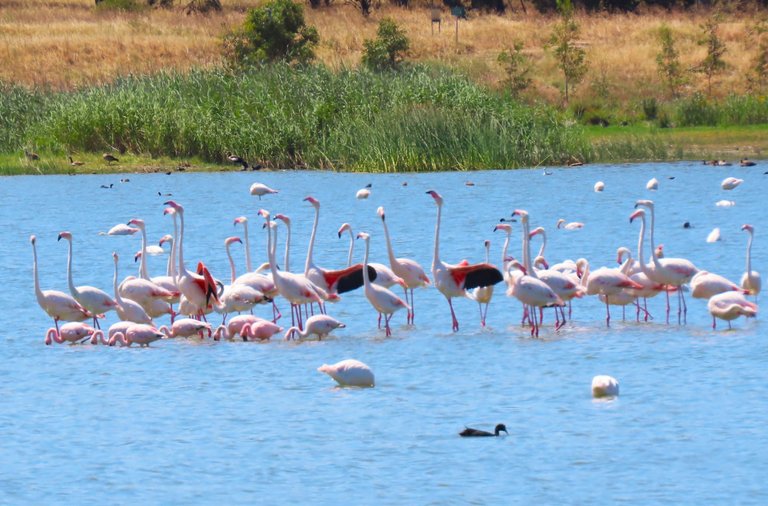
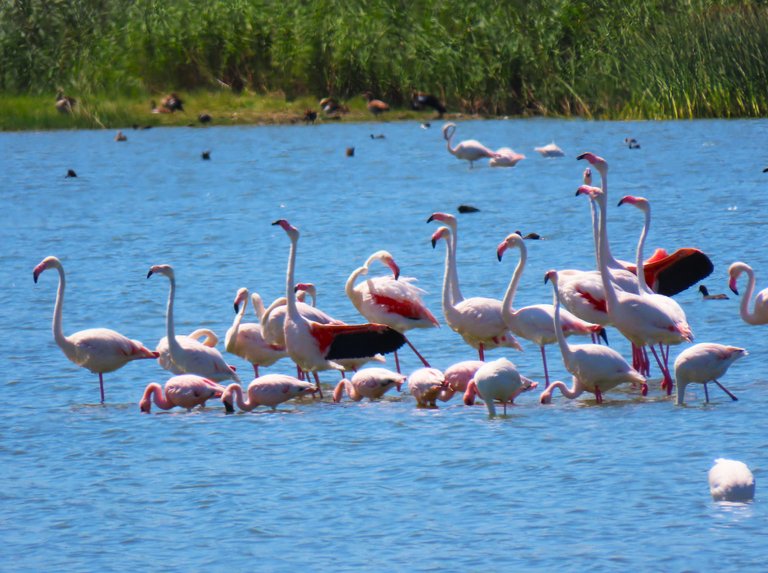
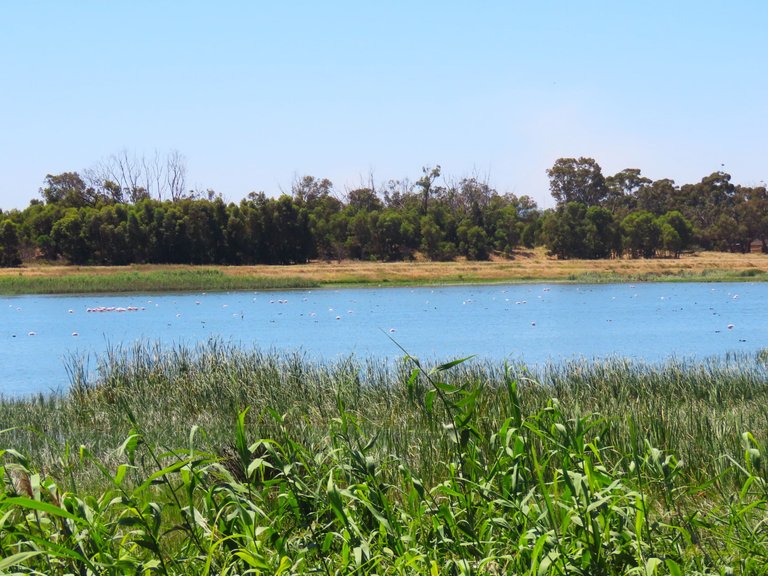
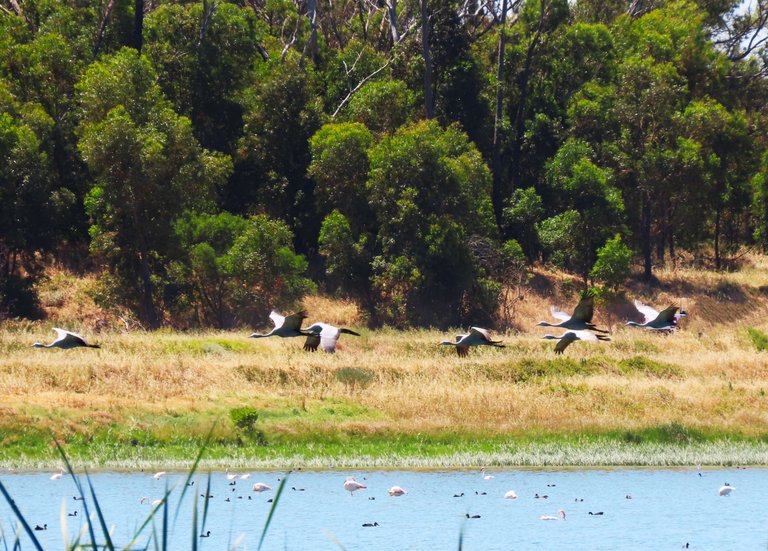
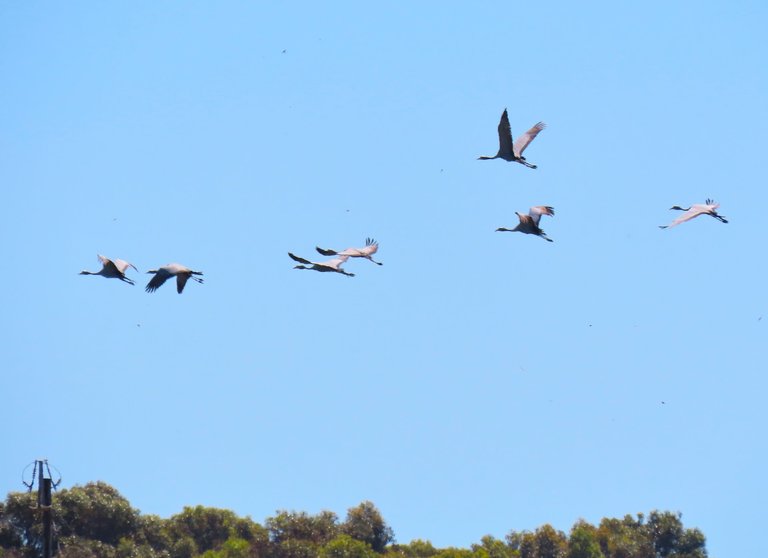
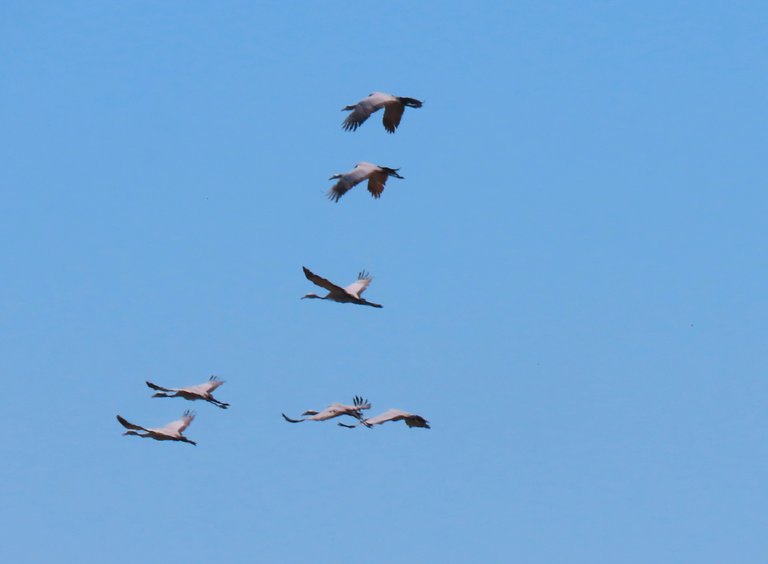
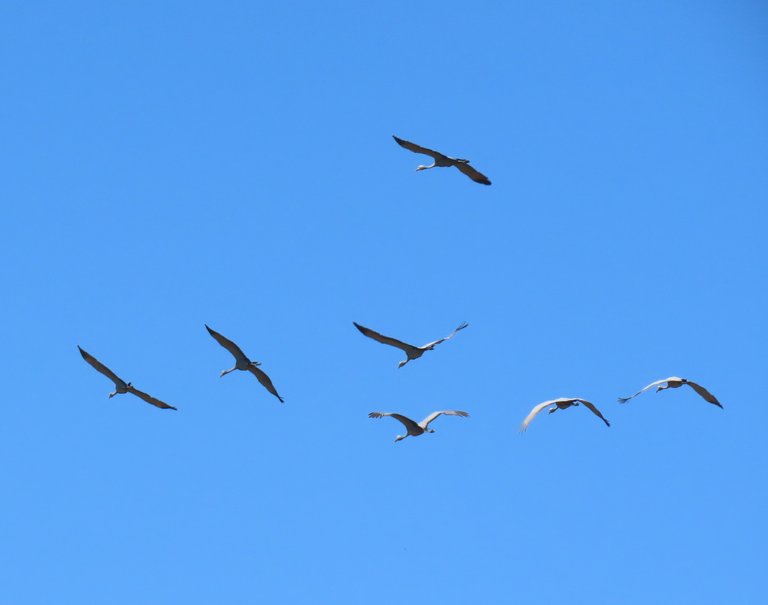
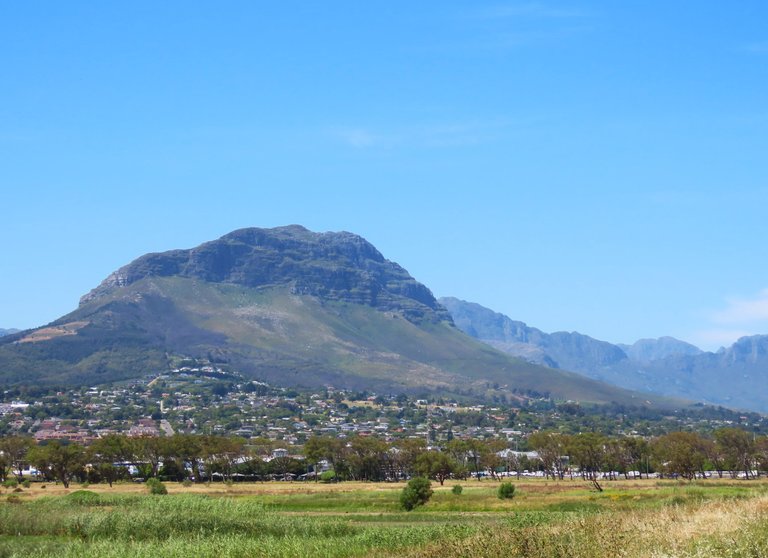
Wow! Just a refreshing view with flamingo 😌
We wait for them every season, and it is always great to see them when they arrive.
!PIZZA
Indeed!
What beautiful photos, those flamingos look spectacular, those animals catch my attention a lot
Oh man, we really love those "animals". Glad that you also liked the flamingos. They are super amazing birds. !LOLZ
lolztoken.com
They unwind.
Credit: reddit
@alejandro1799, I sent you an $LOLZ on behalf of papilloncharity
(2/10)
The flamingos and cranes are gorgeous. I am happy to hear the numbers on the cranes are expanding. Here in Florida, we have flamingos and cranes as well, although I don't know the species. It's wonderful that they have a safe place free from motorboats and fishing nets.
Glad that you also have them in Florida. Hope there are safe spaces for them there too. I know that you will not have the Blue Cranes, as we have them here in SA, but you must have different species of cranes.
!PIZZA
I know one for sure is the Sand Hill Crane and we have Blue Herons and some others I am not sure about. I will have to research that. !LUV
Well, I hope that you will find some surprises during your research, as I always do whenever I really look into things.
!PIZZA
Brings joy to the heart seeing the Flamingo return from the North, safe space with clean water for them to enjoy. St Lucia estuary is the only place I have ever witnessed them in the wild.
Blue Crane enough to have one jumping and singing, I agree this bird I have ever only seen at our local Crocodile Rehabilitation Center, never in the wild.
What a momentous occasion seeing the two species of big bird breeds in one outing.
@tipu curate
Upvoted 👌 (Mana: 65/75) Liquid rewards.
Ooh, the birds at St. Lucia must also be marvelous. Would love to see them one day.
Yes, there is something special about the Blue Crane. No wonder they are our national bird. I was very fortunate to get both of the big bird species at the same time.
Thank you for the tip.
!PIZZA
!LOLZ
!LUV
lolztoken.com
He always wants everything meow.
Credit: reddit
@joanstewart, I sent you an $LOLZ on behalf of papilloncharity
(3/10)
NEW: Join LOLZ's Daily Earn and Burn Contest and win $LOLZ
Perhaps one day we will be fortunate enough to see them in the wild, seeing these two on the same pan what a pleasure to spend watching them.
Have a wonderful day with !LUV from a hot and humid Durban once again.
I really hope that you will see them one day, and I was just in the right place at the right time.
All our !LUV also to you guys.
Once upon a time we had pelicans on the Toti river, now it is too dirty for visitors to delight in unusual birds. Crown Eagle is back with another little one locally hopefully thin out some Vervet monkeys too....
Once upon a time wildlife was abundant all over the country, but now it is all being destroyed.
It will be as it should be, and maybe the vervet monkeys will be in a spot of bother. !LOLZ
lolztoken.com
But that’s a whisk I’m willing to take.
Credit: reddit
@joanstewart, I sent you an $LOLZ on behalf of papilloncharity
(2/10)
Farm LOLZ tokens when you Delegate Hive or Hive Tokens.
Click to delegate: 10 - 20 - 50 - 100 HP
When people kill each other, why would wildlife count?
Such is life my friend.
Ja/Nee!
Super! I've only seen flamingos at the zoo ((
We don't like to visit zoos, but luckily we don't need to. Hope you will also get to see these, and other, birds in the wild too one day.
You learn something new every day! I thought there were only pink flamingos! Or maybe it's males? In the world of birds, the male is the most showy.
You are correct, as all male birds are fancier colored than the females. Not only are there different species of flamingos, but they are also different in size. They term it as "Greater", and "Lesser" flamingos. We all learn something new every day !LOL
lolztoken.com
Sir Render
Credit: reddit
@mandragora88, I sent you an $LOLZ on behalf of papilloncharity
(5/10)
ENTER @WIN.HIVE'S DAILY DRAW AND WIN HIVE!
$PIZZA slices delivered:
@papilloncharity(2/15) tipped @tamaralovelace (x2)
papilloncharity tipped mysteriousroad
papilloncharity tipped joanstewart
I am glad I found this post, I always used to think that we have only one flamingo😅 thank God for this post, I just learnt something new.
Life is never what it seems, and like I said elsewhere, we all learn something new every day.
I am glad that you are glad !LOL
lolztoken.com
A naughty frog.
Credit: fallingforward
@iskawrites, I sent you an $LOLZ on behalf of papilloncharity
(6/10)
Farm LOLZ tokens when you Delegate Hive or Hive Tokens.
Click to delegate: 10 - 20 - 50 - 100 HP
Congratulations @papilloncharity! You have completed the following achievement on the Hive blockchain And have been rewarded with New badge(s)
Your next payout target is 74000 HP.
The unit is Hive Power equivalent because post and comment rewards can be split into HP and HBD
You can view your badges on your board and compare yourself to others in the Ranking
If you no longer want to receive notifications, reply to this comment with the word
STOP